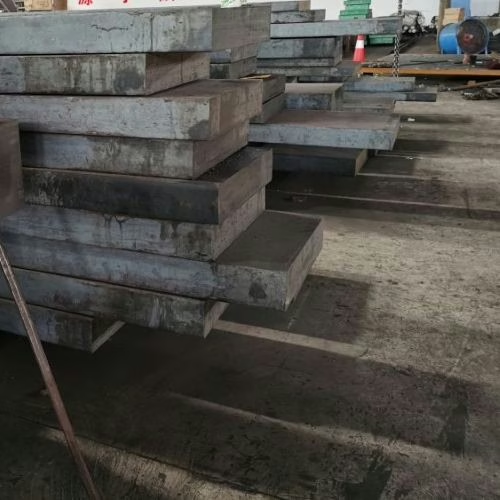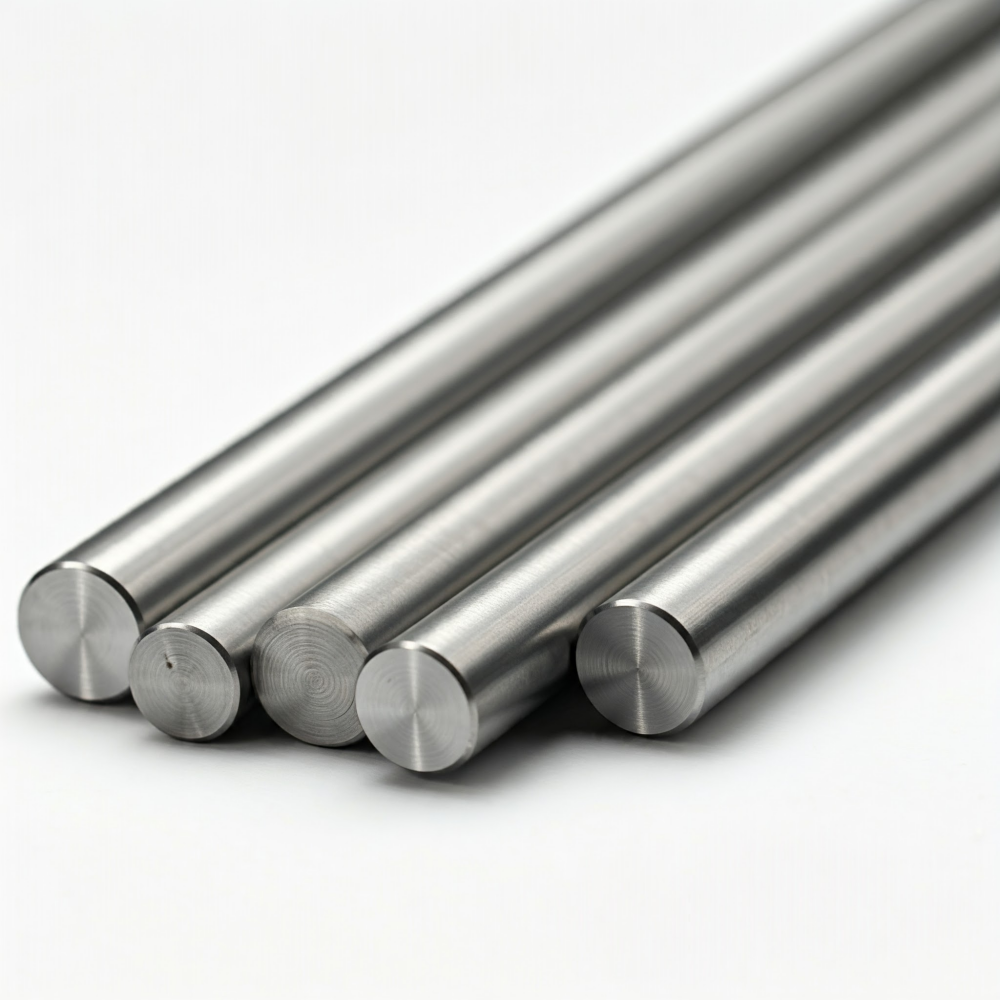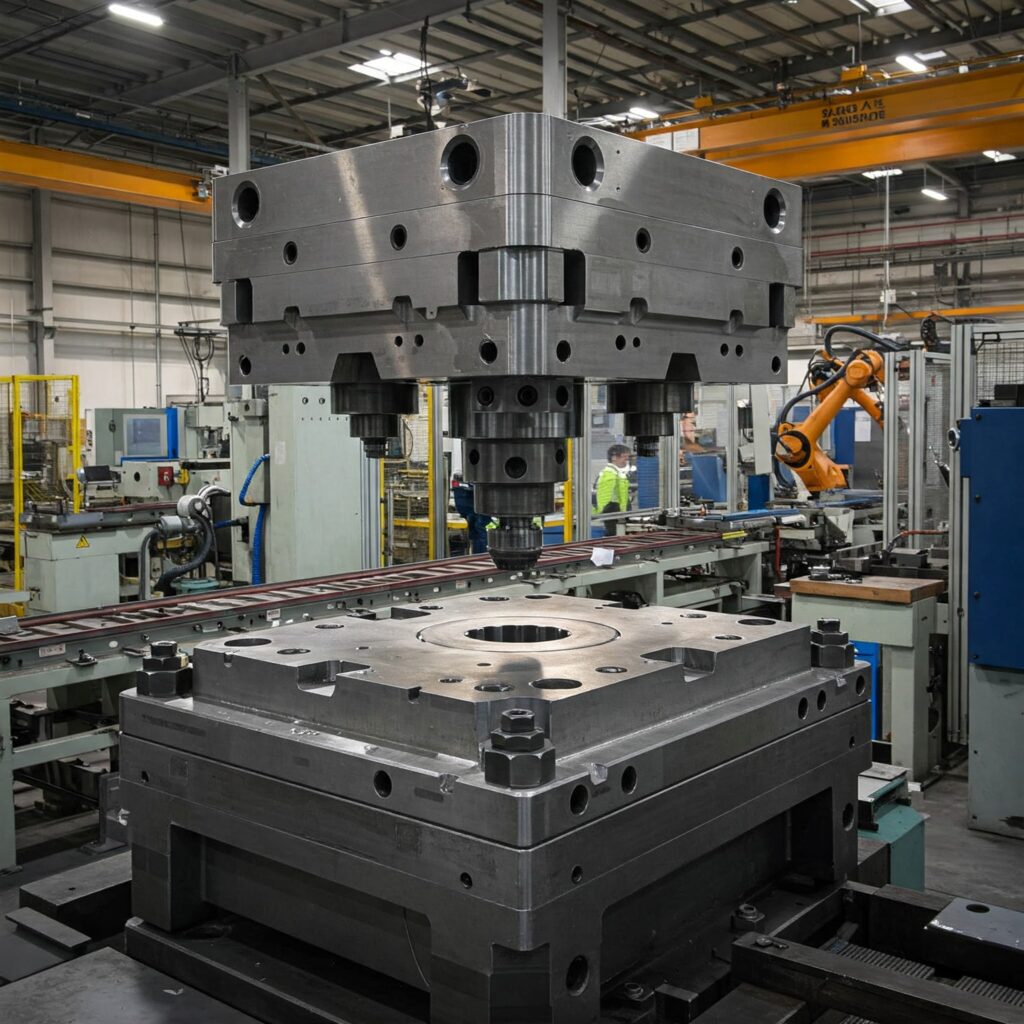42CrMo4 QT'deki “QT”, söndürme ve temperleme anlamına gelir. 42CrMo4 çeliği UNS sisteminde 1.7225 olarak adlandırılan, yaygın olarak kullanılan yüksek mukavemetli alaşımlı bir çeliktir.
42CrMo4'ün eşdeğer sınıfları şunlardır:
- ABD (ASTM/AISI): AISI 4140, SAE 4140H, ASTM A193 B7.
- Japonya (JIS): SCM440, SCM440H
- Çin (GB): 42CrMo
- İngiltere (BS): 708M40, EN19A
- Fransa (AFNOR): 42CD4
42CrMo4 çeliği derin sertleştirilebilirlik, mükemmel kapsamlı mekanik özellikler ve düşük seviyede önemli temperleme özelliği sergiler kırılganlıkMakine parçaları, bağlantı elemanları, krank milleri, dişliler ve kalıplarda yaygın olarak kullanılır.
42CrMo4 için standart ısıl işlem genellikle çeliğin ostenit oluşturmak üzere ısıtılmasını, ardından hızla soğutulmasını ve daha sonra daha düşük bir sıcaklığa tekrar ısıtılmasını içeren söndürme ve temperlemeden (Q&T) oluşur.

Lütfen aşağıdaki iletişim formunu doldurarak bizimle iletişime geçmekten çekinmeyin.
42CrMo4 Çelik Söndürme İşlemi
Söndürme, bir çelik nesneyi ostenitleme sıcaklığından hızla soğutarak ostenitin bir kısmını veya tamamını martensite dönüştürme işlemidir. Bu, çok sert ve güçlü, ancak kırılgan bir mikro yapıdır. Aynı zamanda, malzemenin kalıntı gerilimini ve deformasyonunu azaltabilir.
42CrMo4 çeliğinin ostenitleme sıcaklığı 800 ila 880°C (1475 ila 1650°F) arasındadır. Islatma süresi genellikle malzemenin kesit kalınlığına bağlı olup, her 25 mm (1 inç) maksimum kesit kalınlığı için minimum 1 saat veya 15 ila 20 dakikadır.
- Yağ Söndürme. 42CrMo4 çeliği genellikle yağda söndürülür. Yağda söndürücüler, soğutma hızlarına ve katkı maddelerine bağlı olarak hızlı, orta veya yavaş olarak sınıflandırılabilir. Yağda söndürücülerin normal çalışma sıcaklıkları 25 ila 70 °C (80 ila 160 °F) arasındadır. Bozulmayı en aza indirmek için 175 °C (350 °F) kadar yüksek sıcaklıklarda sıcak yağ kullanılabilir.
- Su Söndürme. 42CrMo4 genellikle yağda söndürülürken, daha büyük kesitlerde (örneğin çapı 75 mm veya 3 inçten büyük yuvarlak kesitler) tam sertleştirme elde etmek için suda söndürme kullanılabilir. Suyla söndürme banyoları genellikle 20 ila 40 °C (68 ila 104 °F) arasında tutulur ve soğutma homojenliğini artırmak için çalkalanır. Ancak suda söndürme, özellikle bu karbon seviyesinde çatlama ve bozulma olasılığını önemli ölçüde artırır.
42CrMo4 Çelik Tavlama İşlemi
Çelikteki söndürülmüş martensit çok serttir, ancak aynı zamanda çok kırılgandır ve yüksek kalıntı gerilimler içerir. Temperlemenin amacı, söndürülmüş çeliği tokluğunu ve sünekliğini artırmak, sertliğini azaltmak ve iç gerilimi azaltmak için alt kritik sıcaklığının (Ac1) altına tekrar ısıtmaktır.
42CrMo4 çeliğinin tavlama sıcaklığı 175 ila 705°C (350 ila 1300°F) arasındadır ve en az 1,5 ila 2 saat bekletilmelidir. Farklı tavlama sıcaklıkları, malzemenin nihai sertliğini ve mukavemetini belirler, böylece malzeme için gereken sertlik ve mukavemete göre tavlama sıcaklığına karar verebiliriz. "Ultra yüksek" mukavemet için 175 °C ile 230°C (350 °F ve 450 °F) arasında tavlama kullanılırken, daha düşük akma dayanımları (1380 MPa veya 200 ksi'nin altında) için 385 °C ile 705°C (725 °F ve 1300 °F) arasında sıcaklıklar uygulanır.1 Tavlama sonrası soğutma hava veya su ile söndürme yoluyla yapılabilir.
42CrMo4 malzemesinin 250 ila 300°C (480 ila 570°F) arasındaki sıcaklıklarda temperlenmesinden kaçınılmalıdır. Bu sıcaklıklarda temperleme, 42CrMo4'ün darbe tokluğunun azalmasına neden olur; bu olguya Temperlenmiş Martensit Kırılganlığı (TME) denir.
Özet
42CrMo4 çeliğinin mekanik özellikleri, çeşitli sıcaklıklarda yağda söndürme ve temperlemeye büyük ölçüde bağlıdır; genellikle temperleme sıcaklığı arttıkça sertlik, çekme dayanımı ve akma dayanımı azalırken, süneklik, tokluk ve darbe enerjisi artar.
- ASM Uluslararası. (1991). ASM El Kitabı, Cilt 4: Isıl İşlem (s. 500-501). ASM International. ↩︎


